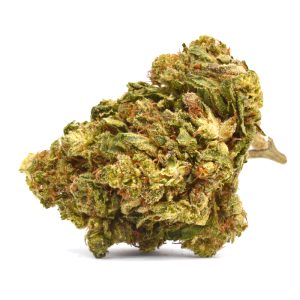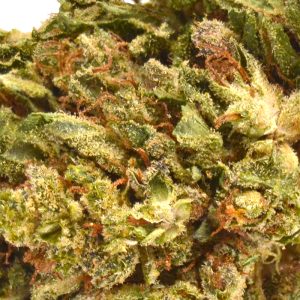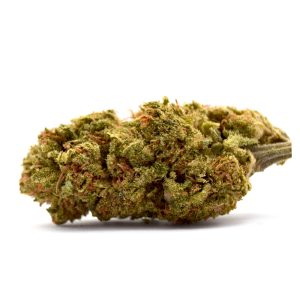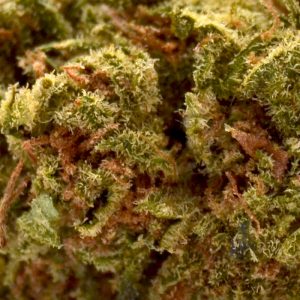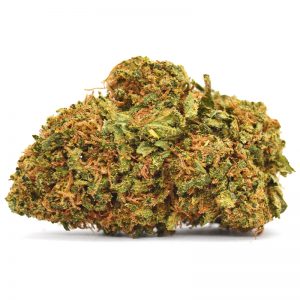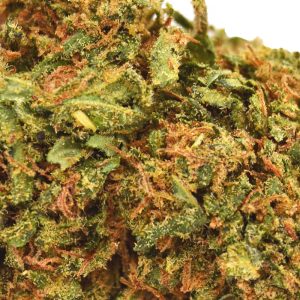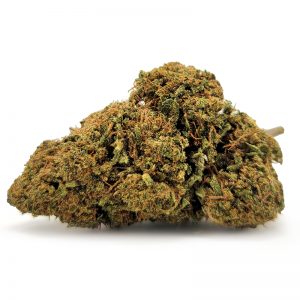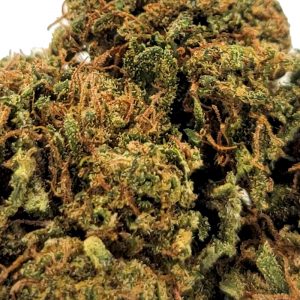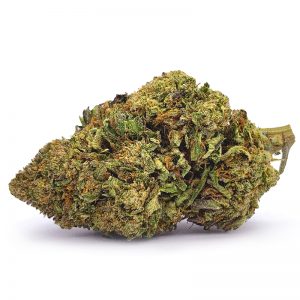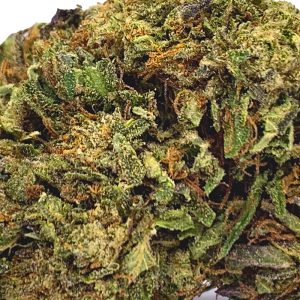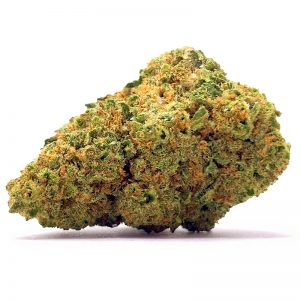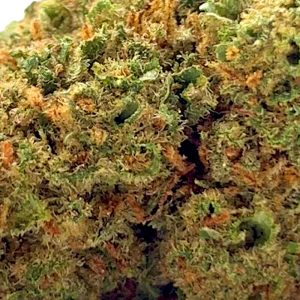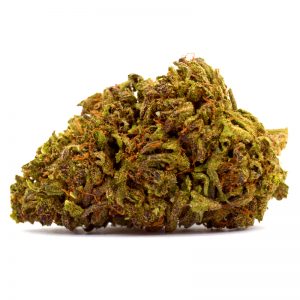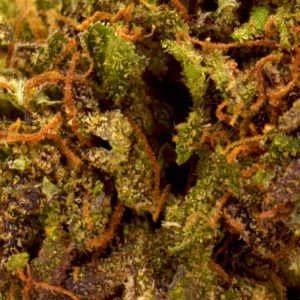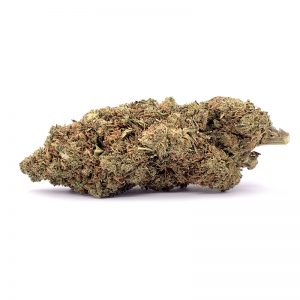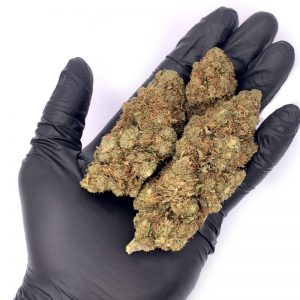Bong … What Is It Exactly? Is It Legal To Buy And Use? See Here

Bong
ˈbȯŋ | Noun
A water pipe used to smoke pot or CBD flower. The cannabis buds (marijuana or hemp, depending on your preference) are placed and heated in the bowl. The bowl is connected to the bong through a downstem, a glass cylinder piece with holes, which allows the smoke to travel and filter through water.
“I invested in a quality glass bong for my CBD flower the other day. All I can say is, it was absolutely worth it.”
“My friends and I enjoy a bong session with CBD flower each Friday.”
What Is It?
The term “bong” comes from the Thai baung (บ้อง), and it means a wooden (bamboo) cylinder or pipe used for smoking. Regardless if it’s homemade or manufactured, this smoking device stays true to the definition of a bong. Its cylindrical neck is its central identifying shape that perfectly mirrors a bamboo stalk’s robust cylinder. It also has a neck or a tube that connects to the base where water resides.
This water pipe is available as both custom-made or homemade. You can find it in various shapes, sizes, and modifications, including attachments like neck pinches or gravity chambers. While some bongs are a single straight tube that connects to the mouthpiece, others have a wide base connected to the tube.
The bowl (the outside part where you place your CBD flower) and the downstem (a pipe that connects the bowl with the water chamber) are two essential parts of a bong. Professionally handcrafted bongs are typically glass, but they can be made from any vessel made airtight and watertight with the help of a stem or a bowl.
Pros and Cons of Bong
Advantages
The number one reason behind the bong’s popularity is that it’s easy to use. The best of them offer simplicity and allow you to immediately hit your CBD flower, without the need of rolling it in a joint. A bonus point is that it creates a smoother hit because it uses water filtration to eliminate harsh dry smoke. A cool trick you can use to “cool” a hit (literally) is to add ice to the water.
This smoking device is generally easier to learn to use compared to other popular ones. It requires less prep work than a pre-roll and offers a stronger hit than a dry flower vaporizer. Even if you are using a small one, it still provides a fresh hit, which doesn’t always happen when smoking a pre-roll that may taste bad from tar build-up.
Does a Bong Filters Smoke?
According to studies on tobacco and cannabis, water pipes can actually filter out toxicants produced by burning cannabis — especially if they are equipped with a diffuser or percolator. Passing the smoke through water could remove the presence of cytotoxins like acrolein and acetaldehyde. These molecules are present in both tobacco and cannabis and are harmful to major defense cells of the lung that are an important component of the immune system.
Disadvantages
The central purpose of this smoking device is to cool and filter smoke using water filtration. However, as beneficial as the filtration is, it also comes with a downside, aka filtering cannabinoids. This means that the user will have to smoke more CBD flower to get the desired effect.
While this is a bummer, some may argue the initial investment for a water pipe for smoking CBD flower is a bigger disadvantage. The upfront cost of this device is much higher compared to a blunt or joint. You can pass it on to your grandkids because it will last for years to come. The initial investment may cost you hundreds, if not thousands of dollars, if talking about an artisan piece.
The advantage that they require less paperwork than joints should be paired with the disadvantage that they require a lot more maintenance and upkeep. Regularly changing the water is essential to keep it easier to clean. If you’re a new user, you should be warned that bong water doesn’t have a pleasant smell but a foul one. The smell of the water is not necessarily a disadvantage, but the odor can be uninviting.
Origins of the Bong
The exact origin of this smoking device is unknown. Archaeologists have assumed that it shares its origin with cannabis (that comes from central Asia) and has evolved from the hookah. But, their findings over the course of decades show that more evidence pinpoints its roots in Africa.
Archaeologist J.C. Dombrowski uncovered the earliest known water pipes in Ethiopia in 1971. According to him, the pipes dated between 1100 and 1400 BCE. In a 1924 study on water pipes of Africa, Arthur Dunhill noted that the absence of smoking apparatus in Europe indicated the pipes’ origin.
He wrote that the San people of Southern Africa created a pipe with a bowl on top and round water chamber at the bottom, connected by a curved tube. According to Dunhill, this was the birth of the water bong. Despite this theory being in relative competition with Dombrowski’s findings, both provide further evidence of the African origins of the bong.
Many thought that African pipes were exclusively used for smoking tobacco, which led them to believe that the pipes originated in Asia. However, the presence of traces of residual cannabis in Dombrowski’s early African water bongs indicates that they were used to smoke cannabis. There are several theories about the origin of the bong and how it spread throughout the world. Therefore, the exact place and time of the appearance of the first bong remain unclear. But, most of the evidence points out to the early African bongs as the OG ones.
The bong may have originated in Africa, but it gained popularity in 16th century China during the governing of the Ming dynasty. From there, it spread throughout Europe, the Middle East, and Asia along the Silk Road. The growing popularity of cannabis worldwide increased the use of water bongs and other smoking accessories. With time, the bong evolved into the smoking device we have today as manufacturers experimented with various materials, shapes, and sizes.
Shaping the Modern Bong
During the 19th century, the glass industry began to flourish in the United States, which paved the way for the 20th-century bong boom in the 1960s and 1970s. The man who started the great bong renaissance is known as Bob Snodgrass. While on tour with the American rock band the Grateful Dead, he designed glass bongs.
After settling in Eugene, Oregon, Snodgrass started teaching people the craft of at home bong-making. This dedicated craftsman discovered “fuming,” a technique that uses gold and silver to color borosilicate glass. During the 90s, his student body continued to grow, while head shops were popping up in every major metropolitan area of the United States.
And this leads us to the modern bong that represents more than a smoking device. Snodgrass’ tradition of making glass bongs has evolved into an art surrounding the craft of bong-making. Now, we’re at the stage when water bongs are a highly functional art piece.
Is a Bong Legal to Buy and Use?
It depends on the state you’re in and the indication of use. Using a water bong for tobacco and medical cannabis, as well as legal CBD flower is permitted. The issue arises when it’s used for smoking marijuana recreationally. Federally, bongs are part of the drug paraphernalia category under the Controlled Substances Act and are considered illegal.
Washington has implemented laws that include a list of banned drug paraphernalia, including a bong. In Ohio, you can get up to 30 days of jail time and a fine for drug paraphernalia possession. However, this excludes states where recreational cannabis is legal.
How to Use a Bong
If this is your first time using a bong, you’ll likely find it overwhelming and confusing. Despite being an easy-to-use smoking device, new users may still find it daunting. If you’re worried about smoking your CBD flower from a bong for the first time, follow these steps to get you started and help you create your own routine.
Step 1: Fill the smoking device with water. Pour water directly into the mouthpiece. Submerge the downstream in no more than an inch inside the smoking device. If you add more water than that, you might inhale some of the water when you smoke.
Step 2: Grind your CBD flower. Use a grinder to grind your CBD flower. If you don’t have one, use a pair of scissors or your fingers to break down the hemp flower.
Step 3: Pack the bowl. Place the ground flower in your bowl, but be careful not to pack it too tightly. When you leave some room in, air can pass through.
Step 4: Prepare for smoking.
- Hold the bong with your non-dominant hand as you take the lighter in your dominant hand.
- Inhale a couple of times to get the oxygen flowing in your lungs. This will make it easier for you to inhale a significant helping of smoke.
- Place your mouth on the mouthpiece. Put your lips fully inside the rim of the mouthpiece to create a tight seal.
Step 5: Light it up. Take your lighter, light it up, tilt it over the bowl, and slowly inhale to draw smoke up the tube.
Step 6: Enjoy! Once you’ve pulled enough smoke into the tube, pull the bowl from the downstem and inhale. Hold the smoke for a few seconds, then exhale.
Does a Bong Produce Better Results?
The large chamber of the bong and its water filtration system allows you to get a bigger hit of smoke than what you would with a pipe or joint. It’s likely that you’ll over-inhale and cough during your first time using a bong. To prevent that from happening, start by taking slow, conservative hits and adjust your inhalation once you “feel” the process.
Components of a Bong
A bong has a distinguishable design that makes it nearly impossible for you to miss it. It’s a set of simple and functional components that work together to create a simple or more complex piece that serves its purpose. A bong may be comprised of the following essential components:
Tube: Also known as a vessel or neck, the tube has a cylindrical form that conducts the smoke and air into the mouth of the user. You may find that the tube is one of the parts that determine the visual outcome of the design of this smoking device. It comes as straight, angeled, and custom.
Base: This part is the chamber that fills the water and is typically the largest and widest part. Depending on the base type, bongs are categorized as straight, beaker, or round base. The straight-tube bong is the classic one and it consists of a single cylinder as the main body. Beaker bongs have a beaker-shaped base or a conic base. Round bases are recognizable for their spherical base and flat bottom. These three types are not much different from each other aside from possible changes in airflow.
Downstem: A piece of glass inserted through the base and into the water that initiates the filtration and carries smoke from the slides into the water. There are two popular downstems, classic and diffused. The classic one is a solid cylinder, while the diffused one has extra holes or slits that diffuse and cool the smoke. The diffused downstem provides a smoother pull. The downstem can be male or female. If it’s female, the bowl is considered male and vice versa.
Bowl: The bowl is the rounded-out part into which you pack your CBD flower. It holds the herb atop the downstem. It’s most commonly available in three sizes, small (10mm), medium (14mm), large (19mm). Downstems also come in these sizes. The size of male bowls is the outer circumference of the fitting end, while the size of female bowls is the inner circumference.
Bong Designs
The development of custom bong-making has led to several advanced bong designs, including:
- Gravity bong – It has a glass percolator in the base and multiple arms where smoke is diffused through.
- Multi-chamber bong – As the name suggests, multi-chamber bong offers more chambers within the tube or base to filter and cool the smoke.
- Stemless bong – It connects directly to the base, typically at a 90-degree angle. This improves the diffusion of the smoke and makes this water pipe appear as one elegant, connected, flowing piece.
Water Bong Accessories
The purpose of most accessories is to offer advanced filtration designs that can enhance the person’s smoking experience. They can also contribute to improving the overall function of the water pipe. Common accessories are:
Percolator
This accessory is typically found in the tube and is a diffuser that smooths and cools smoke. It most commonly comes as a:
- Honeycomb: It gets its name from the disc used. The disk has small holes that break down bubbles and visually reminds of a honeycomb.
- Tree: This percolator is made up of several downstem-shaped diffusion arms with slits on the end.
- Turbine: A new design in the water pipe industry that gives smooth rips and a great visual from the whirlpool effect.
- Fritted: A glass disc that allows optional diffusion through a porous surface.
Carb
The carb is a hole located between the neck and base of the bong. It’s used to control air and the amount of smoke the person inhales. Not every bong has a carb built into it, but most do. When lighting the CBD flower, the person rests their thumb over the hole of the carb and removes it to clear out all the smoke and allow air to fill the neck of the bong.
Rubber grommet
Placed in the hole where the downstem goes through the bong, a rubber grommet is a circular piece made of rubber. Some bongs don’t have it as part of their design. As a replacement, they have a glass holder attached to the opening for the downstem to go through.
Ice pinch
Known as an ice catcher, an ice pinch is a pitched glass formation inside the body of the bong that holds the ice within the neck of the bong without blocking the smoke.
Splash guard
This accessory is known as a dome found in bongs with heavy percolation. It prevents the water bubbling upwards from getting through the mouthpiece while allowing smoke to pass through.
Materials and Their Benefits
The materials used to create your bong matter, but only in the context of how you intend to use your smoking device. This means that every type of material can be used to create a quality bong, meaning the quality of the material itself is not as relevant.
If you’re after an artsy bong, a glass one will satisfy your visual preferences. Methods like glassblowing are tried and true for creating smoking accessories in different forms and colors. A more durable but less aesthetically pleasing bong can be made from plastic or silicone. Here are the most common materials used to make this smoking device:
Glass
The most popular type that’s highly valued for the way it preserves the taste and purity of the smoke from the CBD flower. Glass makes the device more transparent, which helps you see the entire process of vaping your CBD flower. It also allows you to see the spots that need to be cleaned and when you should change the water. Glass bongs are the most expensive and fragile type.
Wood/Bamboo
As you may already know, wooden or bamboo bongs are exceptionally durable and much cheaper than glass ones. If you take care of it properly, it will last for years to come. But, you should know that a wooden bong is much more difficult to clean.
Plastic/Silicone
A plastic bong is the least expensive option, which can be disappointing if you’d like a more clean option. They do last a long time, given the investment.
Silicone bongs are a “newer” option that works for many because they are easy to clean. They are also more durable than glass bongs. But, with a silicone one, you are compromising on flavor because the hits you take will have a mild plastic taste.
Ceramic
A less popular option than other materials because ceramic is fragile, like glass, and is pretty heavy. But, they are cheap and great for displaying creative designs.
How to Clean It?
Now that you know the pros and cons of each material, let’s take a look at one of the most important parts of using your bong: How to clean and maintain this smoking device?
First things first, keeping your bong clean gives you a clear, pure flavor each time you smoke. Proper and regular cleaning removes all the ash build up in the water that gets pulled through the bowl. Cleaning it also destroys the bacteria and resin inside the base and tube.
Try to clean your bong after each heavy smoking session. Use a mix of alcohol and salt or a specifically formulated cleaner for cannabis accessories. First, remove the bowl and downstem (if possible). Then, add alcohol and shake it around until the alcohol breaks down leftover resin. If you still notice some resin, add some salt and continue shaking it.
If the residue is still there, it’s better to let the alcohol soak for 24 hours. When done, dump the alcohol and make sure to rinse it thoroughly with warm water.
Once you’re done cleaning it with alcohol, place it by the window in the sun. The warmth will heat up the alcohol and break down the resin further. If your bong is in a shape that has some hard-to-reach areas, use a pipe cleaner or cotton swab to clean it well. Make sure to reach every part when rinsing it with warm water.
If your bong needs some heavy-duty cleaning, you should soak it in warm water before removing all nasty stains. You can also add some dish soap, but only in a small amount because adding too much might leave a soapy aftertaste that lingers during the next few sessions.
How to Maintain It?
Maintain your bong by following these best practices:
- Make it a habit to change the water after each use.
- The best way to keep it clean is to avoid water spots. To achieve that, use filtered water.
- Clean the ash from your bowl frequently. A clean bowl means no globs of resin in the bong or pulling ash during use.
- If you use it regularly, clean it regularly.
Frequently Asked Questions
Can You Hit The Bong Without Water?
Sure, but what’s the point of that? The water in it helps filter the smoke and provides you with a smooth hit.
Can You Use a Different Liquid Than Water?
You can, but we advise against doing that. Please stick with water.
Can You Get High From Drinking Bong Water?
No, the water won’t get you high. The reason for that is that cannabinoids are fat-soluble, not water-soluble. This means they can only dissolve in fats or lipids, and ingesting the water may only upset your stomach.
How Much Does It Cost?
It can cost anywhere from $20 to $20,000. The cost depends on the materials used, its style, and technique used to make it.
Final Thoughts
A bong is one of the most popular water devices used for smoking CBD flower and weed. It’s available in different materials and comes in various shapes and sizes.

